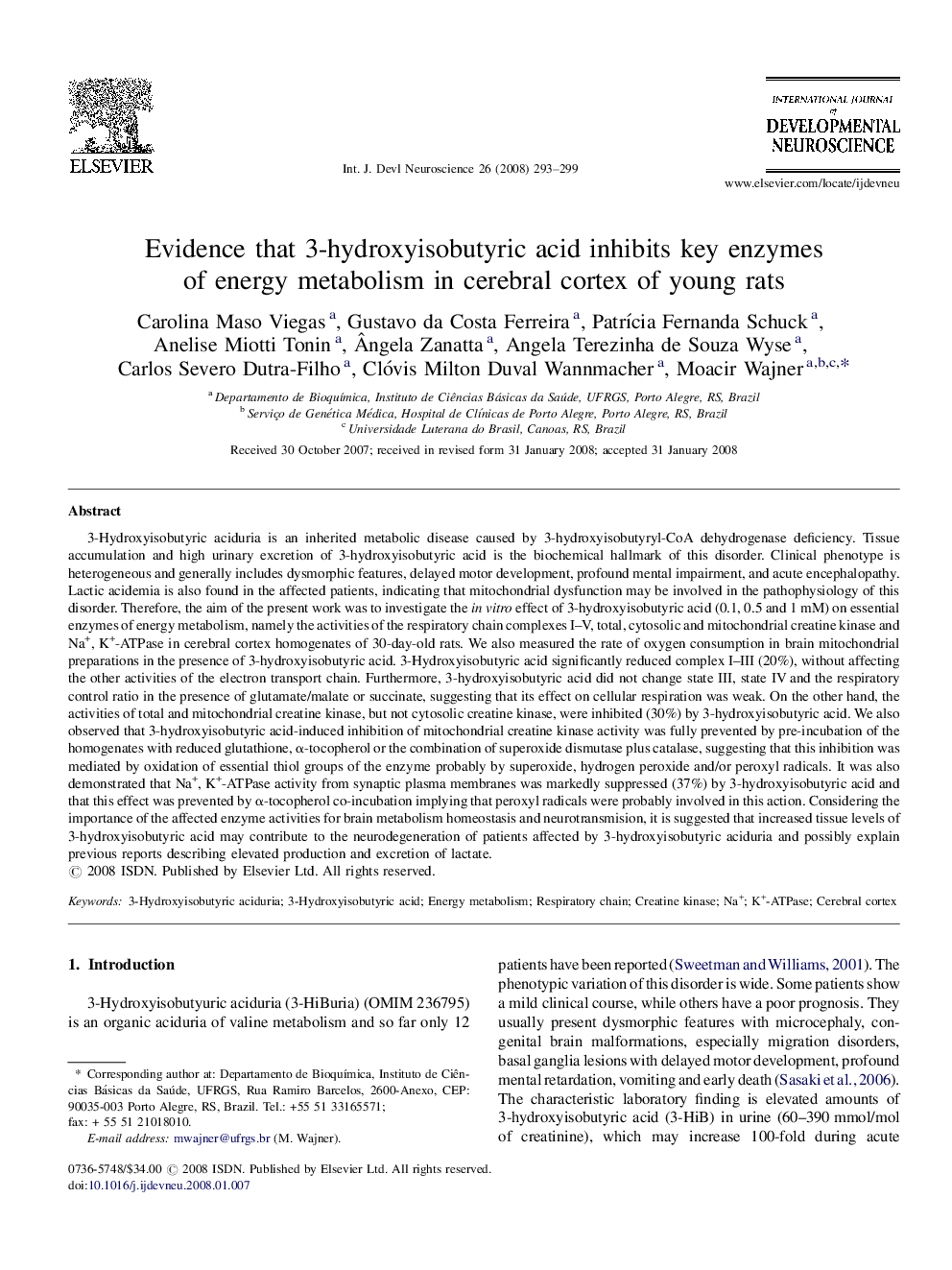| Article ID | Journal | Published Year | Pages | File Type |
|---|---|---|---|---|
| 2787043 | International Journal of Developmental Neuroscience | 2008 | 7 Pages |
3-Hydroxyisobutyric aciduria is an inherited metabolic disease caused by 3-hydroxyisobutyryl-CoA dehydrogenase deficiency. Tissue accumulation and high urinary excretion of 3-hydroxyisobutyric acid is the biochemical hallmark of this disorder. Clinical phenotype is heterogeneous and generally includes dysmorphic features, delayed motor development, profound mental impairment, and acute encephalopathy. Lactic acidemia is also found in the affected patients, indicating that mitochondrial dysfunction may be involved in the pathophysiology of this disorder. Therefore, the aim of the present work was to investigate the in vitro effect of 3-hydroxyisobutyric acid (0.1, 0.5 and 1 mM) on essential enzymes of energy metabolism, namely the activities of the respiratory chain complexes I–V, total, cytosolic and mitochondrial creatine kinase and Na+, K+-ATPase in cerebral cortex homogenates of 30-day-old rats. We also measured the rate of oxygen consumption in brain mitochondrial preparations in the presence of 3-hydroxyisobutyric acid. 3-Hydroxyisobutyric acid significantly reduced complex I–III (20%), without affecting the other activities of the electron transport chain. Furthermore, 3-hydroxyisobutyric acid did not change state III, state IV and the respiratory control ratio in the presence of glutamate/malate or succinate, suggesting that its effect on cellular respiration was weak. On the other hand, the activities of total and mitochondrial creatine kinase, but not cytosolic creatine kinase, were inhibited (30%) by 3-hydroxyisobutyric acid. We also observed that 3-hydroxyisobutyric acid-induced inhibition of mitochondrial creatine kinase activity was fully prevented by pre-incubation of the homogenates with reduced glutathione, α-tocopherol or the combination of superoxide dismutase plus catalase, suggesting that this inhibition was mediated by oxidation of essential thiol groups of the enzyme probably by superoxide, hydrogen peroxide and/or peroxyl radicals. It was also demonstrated that Na+, K+-ATPase activity from synaptic plasma membranes was markedly suppressed (37%) by 3-hydroxyisobutyric acid and that this effect was prevented by α-tocopherol co-incubation implying that peroxyl radicals were probably involved in this action. Considering the importance of the affected enzyme activities for brain metabolism homeostasis and neurotransmision, it is suggested that increased tissue levels of 3-hydroxyisobutyric acid may contribute to the neurodegeneration of patients affected by 3-hydroxyisobutyric aciduria and possibly explain previous reports describing elevated production and excretion of lactate.
